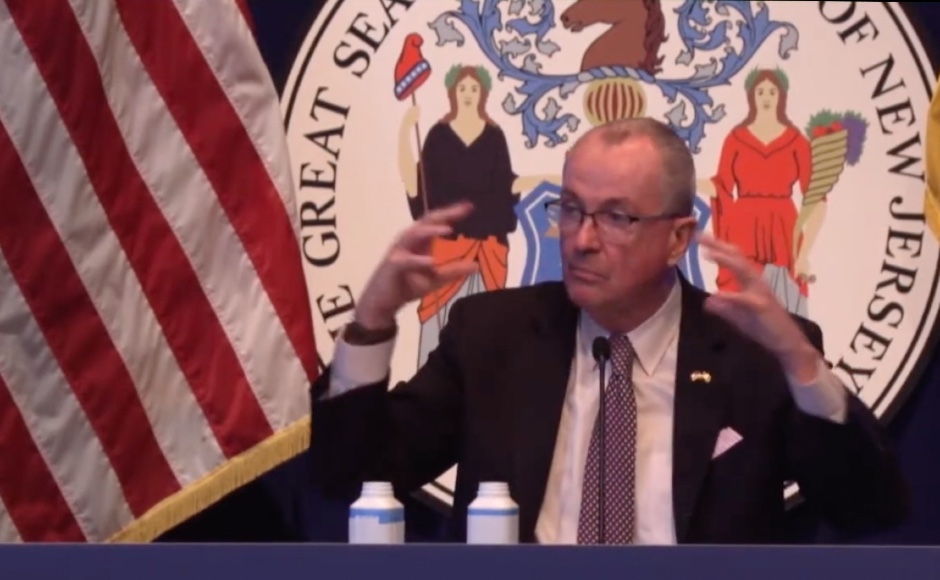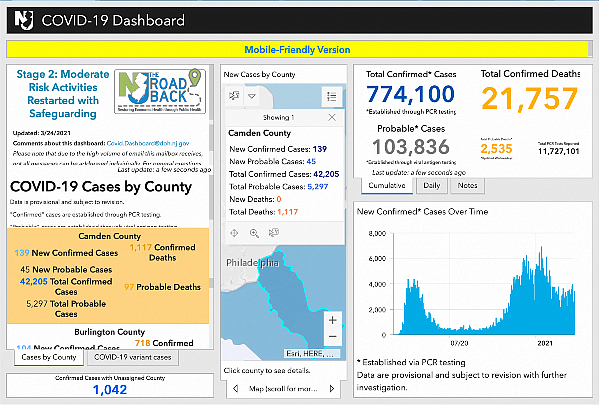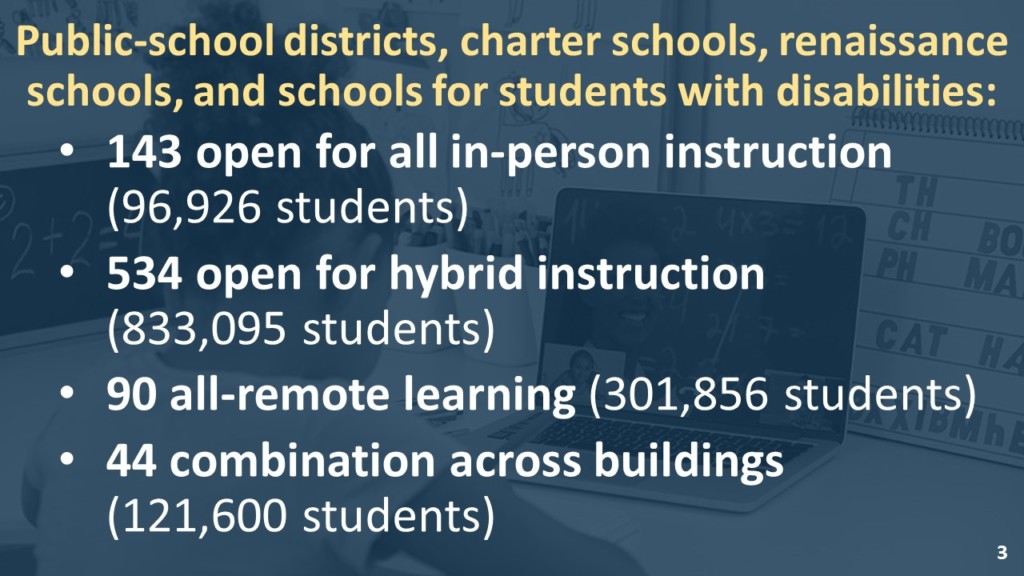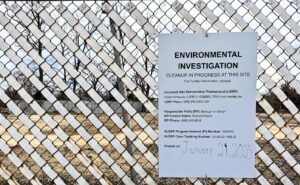Among the new recommendations, physical distancing may be reduced to three feet at elementary-school levels, and among middle- and upper-grade students when COVID-19 regional risk is low.
By Matt Skoufalos | March 24, 2021
Another 3,227 New Jersey residents have tested positive for novel coronavirus (COVID-19), bringing the statewide total to 774,100 cases confirmed via polymerase chain reaction (PCR) testing, Governor Phil Murphy reported Wednesday.
New Jersey is also reporting 1,110 new COVID-probable cases based on antigen tests, bringing the statewide total to 103,836 positive antigen tests.
Antigen tests have a faster turnaround time than PCR tests—sometime within 15 to 30 minutes—but are less reliable at detecting active infection of the virus and more capable of reporting false positives.
Sadly, 28 more residents have perished from complications related to the virus, bringing the statewide, confirmed death toll to 21,757 lives lost during the pandemic.
In addition to those lab-confirmed fatalities, the state has acknowledged another 2,535 probable COVID-19-related deaths—20 more than previously reported.
Since March 2020, 752 of every 100,000 New Jersey residents have been hospitalized with COVID-19, and 244 of every 100,000 have died from COVID-19-related complications.
More than 11.727 million polymerase chain reaction (PCR) tests for COVID-19 have been performed statewide, with an 8.80-percent positivity rate per 100,000 residents.
Rate of transmission (Rt) at 1.09, spot positivity lowest in South Jersey
The statewide average of COVID-19 spot positivity testing based on PCR test results stood at 12.49 percent March 20; in South Jersey, it was lowest, at 10.72 percent.
Rt, the variable that describes the seven-day, rolling-average, statewide rate of transmission of new COVID-19 cases, hit 1.09 on March 22.
An Rt figure greater than 1.0 means that each new COVID-19 patient is infecting more than one other person, on average, and the spread of the virus is increasing.
Since its mid-April-2020 COVID-19 spike, the highest reported RT in New Jersey was 1.48, recorded August 1, 2020. The lowest was 0.62, recorded June 9, 2020.
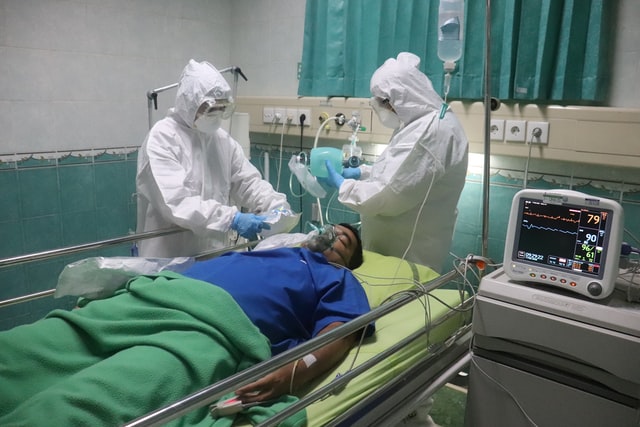
Simulated COVID-19 patient in a hospital bed. Photo by Mufid Majnun on Unsplash
Hospitalizations creeping back up
Throughout New Jersey, 2,136 people currently are hospitalized with a suspected (126) or confirmed (2,010) case of COVID-19, Murphy said.
Among those hospitalized patients, 430 are in intensive or critical care, and 218 of the ICU and critical-care patients (51 percent) are on ventilators.
In New Jersey’s 71 critical care hospitals, 312 patients were hospitalized with COVID-19 yesterday, while 267 others were discharged.
Across the state, long-term care (LTC) centers have reported 1,308 cumulative outbreaks of COVID-19, and 234 are dealing with an active outbreak. LTCs account for 53,865 infected patients and staff in New Jersey, or 6.9 percent of total cases.
That includes 32,465 residents and 21,400 staffers sickened by the virus, as well as 7,980 lab-confirmed resident and staff deaths (37 percent of the statewide confirmed total), with facilities self-reporting 143 staff deaths.
Of 656 veterans residing in three state-run homes, 439 residents have tested positive for COVID-19, and 220 have died from complications related to the virus.
Presently, 12 veterans are hospitalized with COVID-19; 422 have recovered from the virus.
At state-run psychiatric facilities, 337 of 1,120 patients and 987 staff members have tested positive for COVID-19. Fourteen patients and eight staffers have died from complications related to the virus.
MISC cases and schools
To date, 110 New Jersey children aged 1 to 18 have been diagnosed with pediatric multisystem inflammatory syndrome (MISC), according to New Jersey Health Commissioner Judy Persichilli.
All those pediatric patients have tested positive for an active COVID-19 infection or the presence of COVID-19 antibodies, indicating exposure to the virus. No deaths have been associated with this syndrome in New Jersey, although several children have been hospitalized during their treatment.
Since August 1, 2020, 205 COVID-19 outbreaks encompassing 947 individual cases have been traced to schools in 19 New Jersey counties. In Camden County, 16 outbreaks have been linked to 74 cases, third-most in the state.
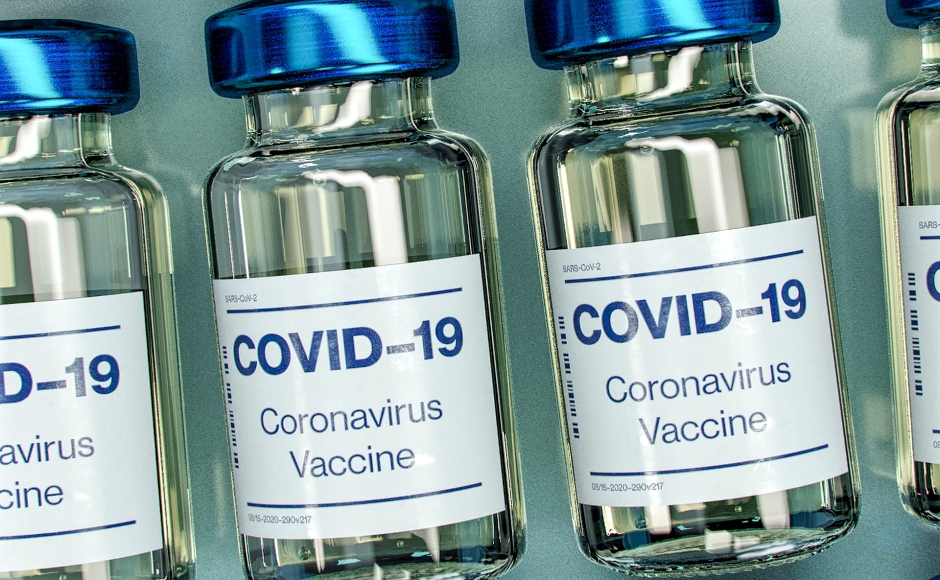
COVID-19 vaccine bottle mock-up. Photo by Daniel Schludi on Unsplash
Vaccination update
Across the state, 3.638 million inoculations have been administered to date: 2.416 million first doses, and 1.289 million second doses.
In Camden County, 222,202 doses have been administered; seventh-most in the state.
The first vaccines in the state were administered December 15; by February 8—55 days later—New Jersey had immunized its millionth resident. Twenty days thereafter, that count hit 2 million. Last week, the state crossed the three-million-vaccination threshold a little more than two weeks after having hit 2 million.
CVS, Walgreens, and Rite Aid are prioritizing vaccination appointments for educators and child care workers, with Walmart setting aside a minimum of 10,000 doses weekly for seniors 65 and older, the governor said.
NJDOH releases updated COVID-19 guidance for schools
On Wednesday, the state Department of Health issued updated COVID-19 guidance for New Jersey schools with an overwhelming recommendation to return students to full, in-person instruction.
“K through 12 schools should be among the last settings to close, after all other mitigation measures in the community have been employed, and among the first to reopen when they can do so safely,” Persichilli said.
Among the highlights of the extensive directives:
- Physical distancing limits were reduced to three feet among elementary-school students in low-, moderate-, and high-risk regions, and among middle- and high-school in low- or moderate-risk regions according to the New Jersey COVID Activity Level Index (CALI). In high-risk regions, that distance should be extended to six feet for middle- and high-school students “to the greatest extent practicable,” and districts able to maximize physical distancing are urged to “consider in-person instruction” under such conditions.
- Masks must be worn at all times, and across all grade levels; when masks cannot be worn, six feet of physical distancing must be maintained, including at meal times, in common areas, “and during activities when increased exhalation occurs, such as singing, shouting, band practice, sports, or exercise (even if masks are worn).”
- Students, teachers, and staff at high risk of severe illness, or who live with high-risk family members should continue to be offered virtual instruction.
- Students and staff should stay home when sick, if they’ve been in close contact with someone with COVID-19 in the past two weeks, and if someone in their household is being tested for the virus. The only exceptions are those who have been fully vaccinated and are asymptomatic.
- NJDOH Guidelines for Vaccinated Individuals state that even after having been vaccinated, students and staff should continue to wear masks, maintain social distance, avoid crowds and poorly ventilated spaces, wash hands frequently, and cover coughs and sneezes. Vaccinated persons should continue to follow CDC travel guidance and “any applicable workplace or school guidance, including guidance related to personal protective equipment use and SARS-CoV-2 testing.”
- Schools should work to increase the circulation of fresh air in their buildings, by opening windows and doors, “using child-safe fans and exhaust fans, and consider having activities, classes or lunches outdoors when circumstances allow.”
- In the event of an outbreak, districts should consider interventions including transitioning to remote learning, contact tracing to determine whether the outbreak occurred within a school setting, and “assess potential contributors to the outbreak.” In addition to the CALI regional risk levels, local health departments can use their additional knowledge of COVID-19 in their jurisdictions to inform local planning and response actions.
“Now is the time for all of our schools to meaningfully move forward with a return to in-person instruction, whether it be full-time or with a hybrid schedule,” Murphy said. “This guidance comes as more of our districts charter and renaissance schools and special-needs schools continue to trend towards in-person instruction.”
Murphy: stimulus payments shouldn’t be garnished for fees, debt collection
On Wednesday, the governor also announced an executive order that exempts all stimulus payments issued to New Jerseyans under the American Rescue Plan Act from garnishment by private creditors and debt collectors.
Excluded from this protection is any overdue child, spousal, or family support, or criminal restitution payable to victims.
“The American Rescue Plan is for the American people, not the banks and creditors,” Murphy said. “We want residents who have received their federal stimulus funds to be able to put those funds to use as they deem necessary. We don’t think that’s an out-of-line desire, and we are pleased that numerous banking institutions agree with us.”
A number of lending institutions pledged to make their New Jersey customers’ stimulus payments available even in instances where they may be overdrawn or have a negative balance. Among them are Bank of America, Citibank, PNC Bank, TD Bank and Wells Fargo, plus another 45 federal and state-chartered banks and credit unions.
Murphy’s plan has also secured endorsements from The New Jersey Bankers Association and the CrossState Credit Union Association.

